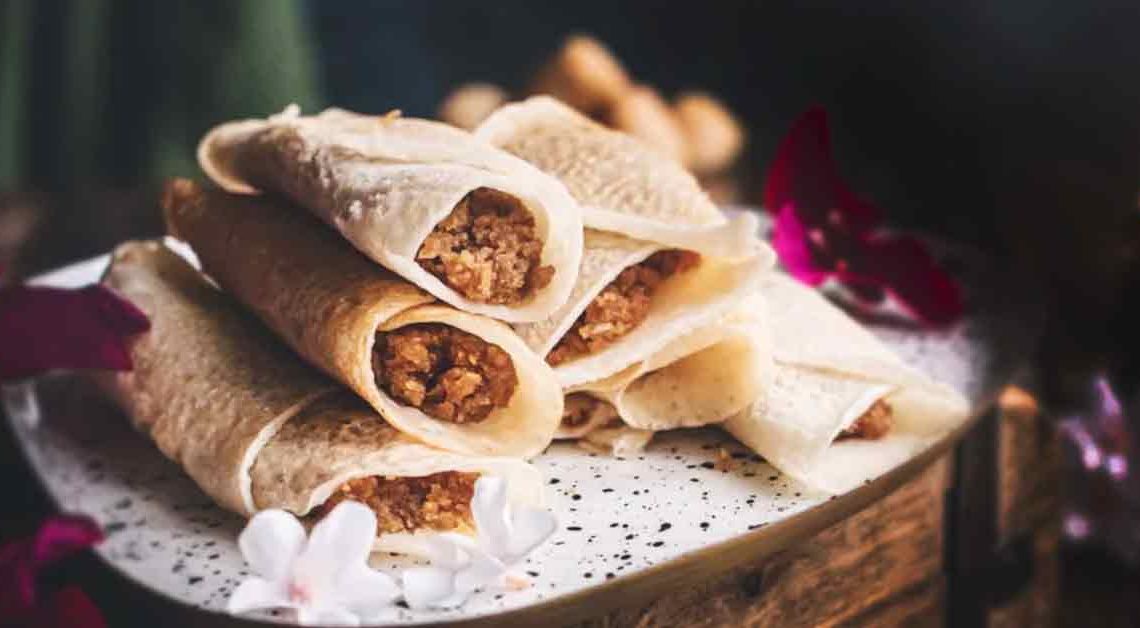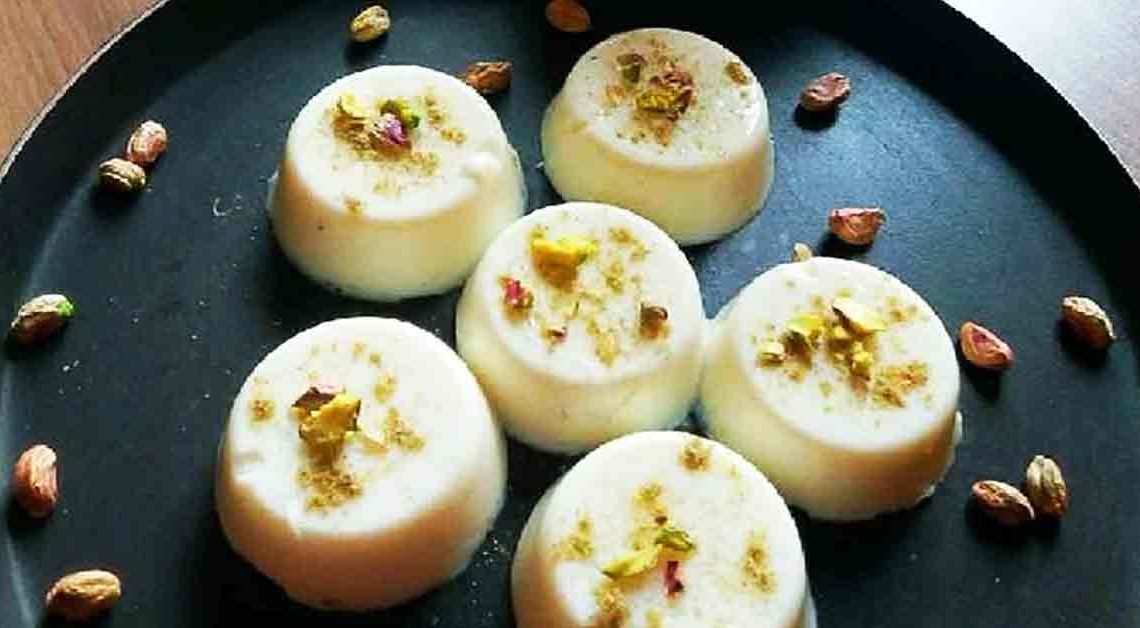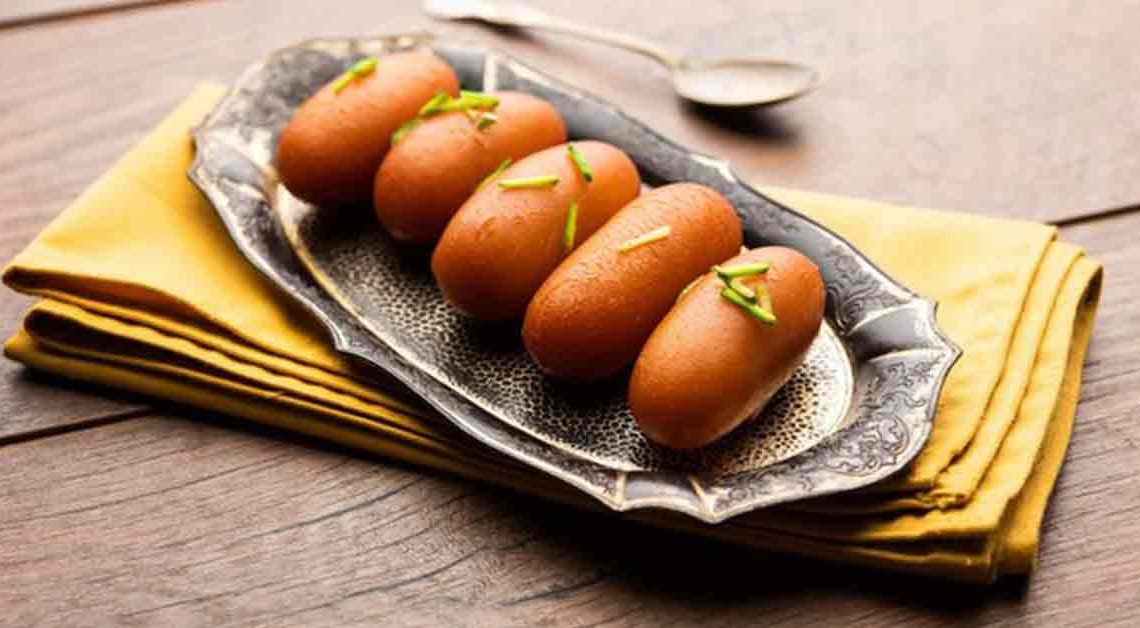Patishapta Perfection: Uncover the Art of Bengali Pancakes

Are you ready to embark on a culinary journey on Mithainama that combines tradition, flavor, and a touch of sweetness? Welcome to our food blog, where we’re about to unravel the delightful world of Patishapta – the soul-warming, Bengali pancake that will transport your taste buds straight to the bustling streets of Kolkata.
Patishapta, with its delicate crepe-like texture and a filling that ranges from creamy coconut and jaggery to luscious milk solids, is a beloved treat during the auspicious occasion of Makar Sankranti in Bengal. But why wait for a special day when you can enjoy these mouthwatering delights all year round?
Get ready to tantalize your senses with the enticing aromas and flavors that make this Bengali delicacy a true culinary gem. Your culinary adventure begins here!
Origin of Patishapta
Patishapta, a beloved Bengali dessert, has a rich culinary history deeply rooted in the cultural traditions of Bengal, India. The name “Patishapta” itself is derived from the Bengali words “pitha” and “shapta,” which respectively mean “cake” and “thin.” This name perfectly encapsulates the essence of this delicacy – a thin, crepe-like cake filled with delicious sweet fillings.
The origin can be traced back centuries, with its roots firmly entrenched in the age-old tradition of making pithas, which are a category of traditional Bengali rice cakes. Pithas are typically prepared during special occasions and festivals, such as Makar Sankranti, Poush Parbon, and other winter celebrations.
It is especially popular during Makar Sankranti, a harvest festival celebrated with much fervor in Bengal. It marks the end of the winter season and the beginning of longer days. Families come together to prepare a variety of sweets and snacks to celebrate the occasion, and is a must-have delicacy on the menu during this time.
History of Patishapta
Patishapta, a delectable Bengali dessert, has a history that stretches back centuries. Its name is derived from two Bengali words: “pitha,” meaning cake, and “shapta,” meaning thin. This name aptly describes the nature of Patishapta, which is a thin, crepe-like pancake filled with sweet fillings.
The roots are deeply embedded in the culinary traditions of Bengal, India. It is a prominent feature of Bengali cuisine, especially during festivals and special occasions. The practice of making various types of pithas, including Patishapta, is a long-standing tradition in Bengal.
It is closely associated with Makar Sankranti, a winter harvest festival celebrated in Bengal and other parts of India. During this festival, families come together to prepare an array of sweets and snacks to mark the end of winter and the arrival of longer days. It is a cherished treat during this time, made with fillings that include grated coconut, jaggery, and sometimes khoya (sweetened milk solids).
Cultural Significance
Patishapta holds significant cultural importance in Bengali society and is closely tied to various aspects of Bengali culture and tradition:
Festivals and Celebrations: It is a staple dessert during Bengali festivals, especially Makar Sankranti (also known as Poush Sankranti). Families come together to prepare and share as part of the festive rituals. The dish symbolizes the warmth and togetherness of these celebrations.
Seasonal Significance: Makar Sankranti marks the transition from winter to spring, and is prepared to celebrate the arrival of longer days and the harvest season. It is a sweet representation of the changing seasons and the hope for a prosperous year ahead.
Family Traditions: The recipes are often passed down through generations within Bengali families. Preparing and sharing recipes is a way of preserving cultural traditions and strengthening familial bonds.
Where is Patishapta Famous?
It is primarily famous in the Indian state of West Bengal and among Bengali communities both within India and in other parts of the world. It is an iconic dessert in Bengali cuisine and holds a special place in the culinary traditions of Bengal. Here are the primary regions where Patishapta is famous:
It is a beloved dessert in West Bengal, where it is especially popular during the festival of Makar Sankranti (Poush Sankranti). Families across the state prepare and enjoy as part of their traditional celebrations.
Bengali immigrants and their descendants around the world have introduced Patishapta to international audiences. In countries with significant Bengali communities, such as the United Kingdom, the United States, Canada, Australia, and the Middle East, it is prepared and enjoyed as a taste of home and a connection to Bengali culture.
Interesting Facts and Trivia
Patishapta is a fascinating and beloved Bengali dessert with several interesting facts and trivia associated with it:
- It has been part of Bengali culinary traditions for centuries, with historical references dating back to ancient texts like the Manasollasa, a 12th-century Sanskrit encyclopedia.
- While the classic features fillings like coconut and jaggery, there are numerous regional and modern variations. Some include khoya (sweetened milk solids), date palm jaggery (nolen gur), or even fruit preserves.
- It is believed to symbolize the sun, and its round shape represents the sun’s journey across the sky, making it an auspicious dish during Makar Sankranti.
- Preparing it is considered an art form in Bengali cuisine. Achieving the perfect thickness of the crepe and the ideal consistency of the filling requires skill and practice.
- In recent years, Patishapta has seen creative modern adaptations, including fusion versions like chocolate-filled Patishapta, mango-flavored Patishapta, and more, catering to evolving tastes.
Did You Know?
Did you know that Patishapta, the delectable Bengali dessert, offers not only a delightful taste experience but also some surprising health benefits?
- The crepe-like outer layer of Patishapta is typically made from rice flour, which provides a good dose of dietary fiber. Fiber aids in digestion and helps maintain a healthy digestive system.
- Depending on the filling used, it can be a source of essential nutrients. Coconut, for instance, provides healthy fats and vitamins, while jaggery offers iron and antioxidants.
- The combination of carbohydrates from the rice flour and natural sugars from the filling provides a quick energy boost, making it an ideal snack to replenish energy levels.
- Traditional Patishapta are often made without added fats like butter or ghee, which means it’s naturally low in cholesterol, making it heart-healthy when consumed in moderation.
- Some variations incorporate ingredients like date palm jaggery (nolen gur), which is rich in antioxidants that help combat harmful free radicals in the body.







